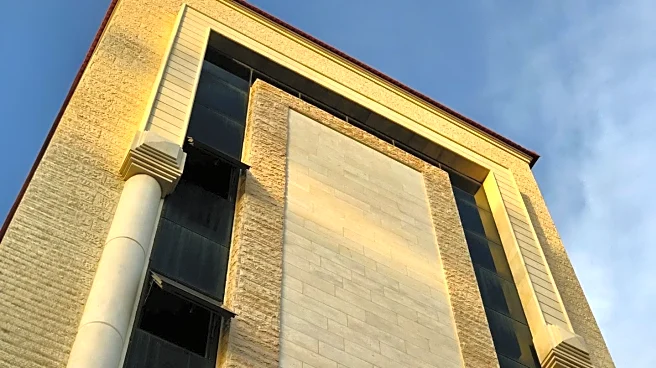What's Happening?
The Sherman Swift Tower, located along Highway 52 near Garnavillo, Iowa, stands as a testament to the conservation efforts initiated by Althea Sherman, a self-taught ornithologist. Originally constructed
in 1915, the 28-foot tower was designed to study the nesting habits of Chimney Swifts, birds known for their long migration from South America to the Upper Midwest. After falling into disrepair, the tower was restored in 2009 by the Friends of the Sherman Tower, a group dedicated to preserving Sherman's legacy and promoting the population of Chimney Swifts. The restoration included the construction of small nesting towers in local communities, such as Guttenberg and Elkader, Iowa, and Prairie du Chien, Wisconsin.
Why It's Important?
The restoration of the Sherman Swift Tower underscores the importance of preserving historical structures that contribute to wildlife conservation. Althea Sherman's work in ornithology, particularly her focus on Chimney Swifts, highlights the critical role of individual efforts in understanding and protecting migratory bird species. The tower serves as an educational tool, raising awareness about the ecological significance of Chimney Swifts and the challenges they face. By promoting the construction of additional nesting towers, the project supports biodiversity and encourages community involvement in conservation efforts.
What's Next?
The Friends of the Sherman Tower continue to promote the legacy of Althea Sherman through educational tours and community projects. As Chimney Swifts face habitat loss, the organization aims to expand its efforts by constructing more nesting towers and engaging with local communities to foster a greater understanding of these birds. Future initiatives may include partnerships with educational institutions and conservation groups to further research and protect migratory bird populations.
Beyond the Headlines
The restoration of the Sherman Swift Tower not only preserves a piece of Iowa's history but also serves as a model for integrating historical preservation with modern conservation efforts. It highlights the potential for small-scale, community-driven projects to make a significant impact on wildlife conservation. The project also raises questions about the sustainability of such efforts and the need for ongoing support and funding to ensure their success.












